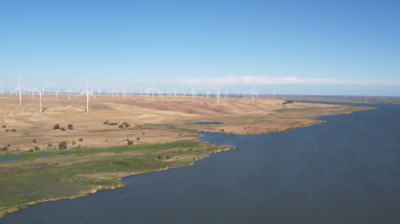Major Water Districts Join California Resilience Challenge
The Metropolitan Water District of Southern California and the Santa Clara Valley Water District today (Sept. 26) announced they have joined the California Resilience Challenge, a new initiative to strengthen California’s resilience to climate change. The statewide challenge is attracting resources from businesses, utilities, and philanthropies to support planning and implementation of community-level projects aimed at increasing resilience to drought, floods, heatwaves and wildfires.
The water districts, which each contributed $200,000 to the effort, join PG&E on the Challenge’s Steering Committee. The total amount raised through the challenge will be announced in 2019 when organizers will begin a competitive process to solicit creative and innovative local projects to address the impacts of climate change.
“We grapple with climate change every day,” said Richard P. Santos, Chair of the Santa Clara Valley Water District Board of Directors. “Much of California’s water system was designed for a climate system that’s becoming less recognizable each year, and the California Resilience Challenge is an innovative way for utilities and businesses to support projects that will improve the safety and resilience of communities across California.”
“Climate change is already impacting California’s water supplies on virtually every front,” said Jeff Kightlinger, General Manager of the Metropolitan Water District of Southern California. “Our droughts are drier and our storms more intense than they were just a generation ago. We have to take steps to adapt to this new reality. We’re proud to join innovative efforts like the California Resilience Challenge, and encourage other companies, utilities, and foundations to join us.”
“We applaud the leadership of Santa Clara Valley Water District and Metropolitan Water District of Southern California for joining the California Resilience Challenge,” said Geisha Williams, CEO and President of PG&E Corporation. “California is already experiencing the impacts of climate change. PG&E is committed to doing our part to invest in the resilience of our gas and electric infrastructure, and in the resilience of the communities where we live and work.”
“California’s business climate is inseparable from its actual climate,” said Jim Wunderman, President & CEO of the Bay Area Council. “Much of California’s infrastructure was built under a colder, wetter, more predictable climate than we have today. We’re thrilled to have the Santa Clara Valley Water District, Metropolitan Water District of Southern California, and PG&E as partners in this truly unprecedented statewide Challenge.”
Since launching in April 2018 with a $1 million shareholder contribution from PG&E Corporation, the California Resilience Challenge has gained support from some of California’s top environmentalists and national resource experts. The Challenge is being administered by the Bay Area Council.
Need for Action
Climate change will push California’s already volatile weather system to further extremes, increasing the frequency and severity of droughts, heat waves, flooding, and wildfires, and drive longer-term changes such as rising sea levels. California’s recent drought included the driest four-year period in the state in 1,200 years, including the hottest summer ever recorded. The drought was finally ended with the wettest water year in recorded California history (2016-2017), resulting in severe flooding in San Jose, and severe infrastructure damage at California’s largest reservoir. According to the U.S. Forest Service, an estimated 129 million trees have died in California since 2010 and Cal Fire’s budget has increased by 45 percent since 2014 to address successive record wildfire seasons.
The California Department of Water Resources predicts the Sierra snowpack, which accounts for over a third of California’s total water supply, will decline by up to 65 percent by the end of this century, straining California’s farms, cities and ecosystems. On our coastlines, sea levels at the Golden Gate are projected to rise 6-13 inches by 2050, on top of the eight-inch rise measured in the 20th century. According to a study from the Bay Area Council Economic Institute, the Bay Area alone could suffer over $10 billion in damages (about the same as Loma Prieta earthquake) during an extreme storm under current sea levels.
These and other changes have the potential to negatively impact the health and safety of communities throughout the state, and undermine California’s economic prosperity. California companies are integral to the sustainability of the communities they serve — and have a unique responsibility to help them prepare for, withstand and recover from extreme events caused by climate change.





